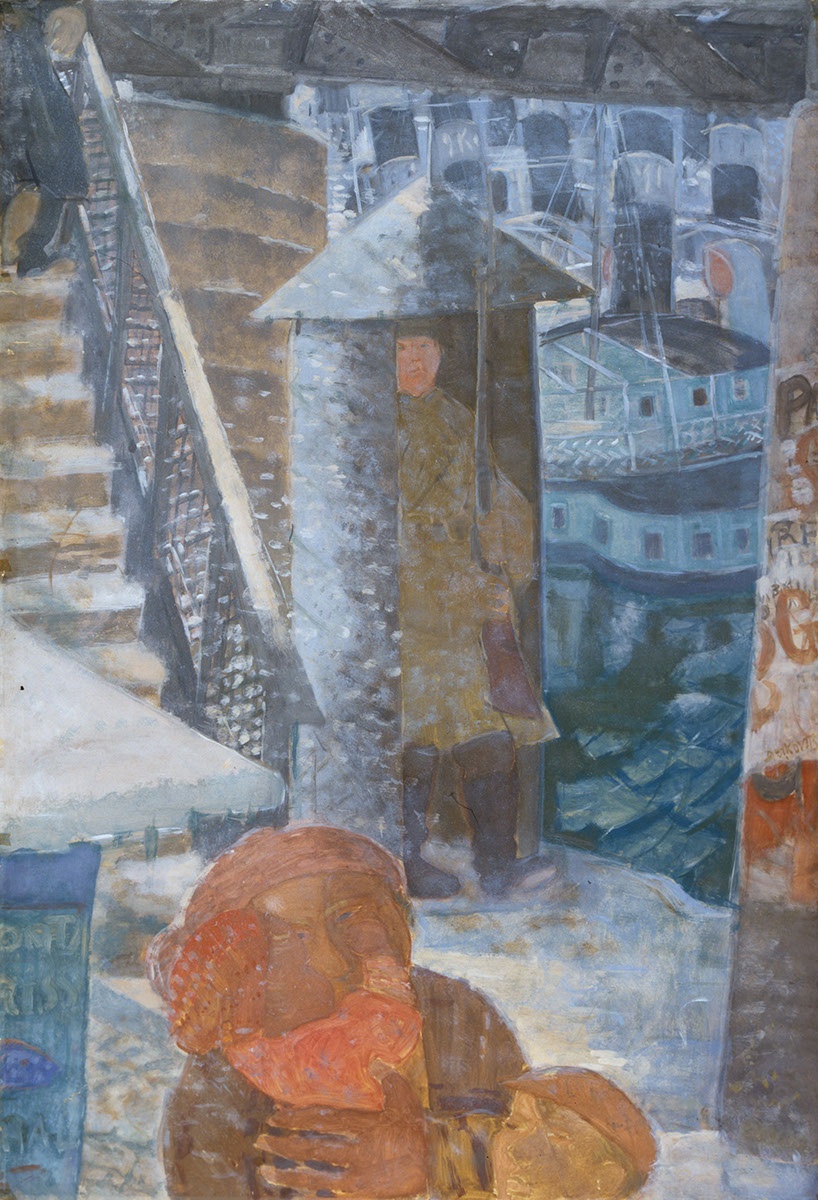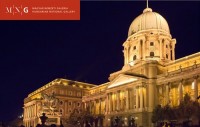Gyula Derkovits firmly identified himself with the most vulnerable layers of society, and he used the tools of painting to condemn social injustice. He depicted proletarians, beggars and prostitutes as they came up against the indifference of the bourgeoisie or the might of the oppressive regime. The brutal skirmishes that took place at street protests were crammed into dramatically powerful images. The painting Bridge in Winter operates with less blatant symbolism, although the way Derkovits employs the clash of contrasts is no less emphatic. The little family shivering at the steps of a suburban bridge hover near a gendarme standing watch, the armed guardian of the dockside, the defender of power and property. The apparent calm is wracked with tension. The monumental brown-hued figure of the mother sheltering her children stands out against the silvery grey of the piercing cold of the city. In its veil-like transitions of delicate pastel shades, the succinctly expressed composition of simplified forms is elevated to a unique moment in which the truth is laid bare.
en

